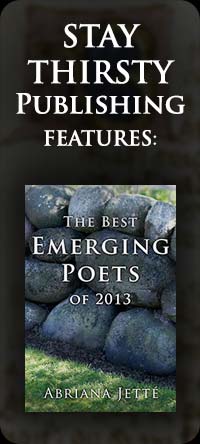

By THIRSTY
Mark Yost has written for The Wall Street Journal for over twenty years, has served as the Journal's editorial page writer in New York and Brussels and has been a regular contributor to it's Leisure and Arts section in the US, Europe and Asia. His columns have also appeared in Sports Illustrated, The New York Times and Street & Smith's Sports Business Journal. A six-year veteran of the US Navy, he also spends time as a firefighter/paramedic in the northern suburbs of Chicago. His first noir thriller, Cooper's Daughter, was released in June 2014 and his second book in the Rick Crane series, Jimmy's Nephew, will be released this fall. THIRSTY was fortunate to have the opportunity to visit with Mark Yost in Chicago between stints for the Journal, his duties with the Highwood Fire Department and his work on the third Rick Crane novel.
THIRSTY: What first attracted you to the noir thriller? Which of the iconic writers in that genre influenced you the most? Were you influenced by any of the classic noir films?
MARK YOST: I always thought I had a thriller in me. And, originally, I thought I would do something similar to Tom Clancy or John le Carré. I had been in the Navy, covered the military for The Wall Street Journal. So it was a natural progression.
But then I discovered this thing called noir. First through movies, like The Big Sleep, The Third Man, and, my favorite noir – and perhaps the best of all time – Double Indemnity. If you only know Fred MacMurray as the affable Steve Douglas, the father of Chip and Ernie on My Three Sons, or the bumbling professor in the Disney Flubber movies, it's a real change of character and shows his depth and breadth as an actor.
I'm such a fan of the movie that I knew that the house where MacMurray's Walter Neff gets sucked into the dark world of murder for love was still standing in the Hollywood Hills. So I drove up with my son and made George take a picture of me in front of the steps where Walter Neff utters perhaps the greatest noir line ever written: "How could I have known that murder can sometimes smell like honeysuckle." In fact, that line was my Facebook post, along with the photo.
From the movies I discovered noir authors like James M. Cain, Dashiell Hammett, and, of course, Raymond Chandler. I also like a modern-day noirish author named Charlie Huston. He wrote a three-book series set in Brooklyn, where I spent much of my young life. The first book was called Caught Stealing, and introduced you to a character who gets mistakenly caught up with the Russian mob in Brighton Beach, a neighborhood I know very well.
THIRSTY: You debuted a new noir series with your book Cooper's Daughter based on an Upstate New York private investigator named Rick Crane. Who is Rick Crane and what makes him so intriguing?
MARK YOST: Rick Crane is the classic noir-flawed good guy. When we first meet Rick, he works as a private eye, mostly investigating cheating spouses. He's also a part-time enforcer for the local mob boss.
A lot of people don't realize that Upstate New York – places like Rochester, Syracuse and Buffalo – are as mobbed up as Brooklyn and the Bronx. Before it became the Rust Belt, Upstate New York, where I went to high school, was part of the industrial heartland. And in that heartland, there were union contracts to negotiate, well-paid workers who liked to gamble and borrow money. And businesses to shake down. It was prime mob country.
So we meet Rick, and shortly after he blackmails one of the cheating wives he's following into going to bed with him, down-on-his-luck Bill Cooper comes to Rick while he's having his morning coffee, spiked with bourbon, at the local bar. Cooper's daughter has been murdered. He barely has two nickels to rub together, but Rick feels sorry for him and takes on his case. This sets up the good guy-bad guy persona of Rick. He's breaking fingers one minute to get guys to pay their vigorish loans to Rick's boss, the next he's risking life and limb so that Bill Cooper can have some closure with his daughter's murder.
There's also a high school sweetheart, Mary Walsh Rooney, who comes into the picture about halfway through the book, further complicating Rick's character.
THIRSTY: You have a long career as a journalist that included time as an editor at The Wall Street Journal, the Dow Jones Newswires and as foreign correspondent. Was it difficult to shift gears as a writer of short-form journalism to create a compelling full-length detective novel?
MARK YOST: Not really, because my best training as a journalist was at the Dow Jones Newswires. That's the wire service for The Wall Street Journal. Their bread and butter is the brief news bites that go out to the brokers and traders on Wall Street, giving them the news short and sweet.
So, for instance, when we would get an earnings release for Chase or GE, we would put out maybe 30 headlines in about 5 minutes. I think 64 characters was the limit. Twitter before anyone even thought of Twitter.
Then, we would fill out each one of those headlines with little three- or four-paragraph nuggets. When it was all done, an editor over at the Journal would take our snippets and cobble them into a story for the next day's paper.
Writing in that staccato style was great training for the voice and tone you need to write noir. Short, tight sentences that don't waste a word.
And, of course, I had listened for years to the dialogue of noir films. Phillip Marlow and Sam Spade talking to less-than-desirable characters in back alleys and dark barrooms.
THIRSTY: You have written about World War I on many occasions including recent columns for The Wall Street Journal. What stirred your interest in that war and what is the significance of its 100th year anniversary, especially in light of the issues occurring between Russia and the Baltic states in 2014? Are Europeans more in touch with the tragedy of World War I than Americans?
MARK YOST: World War I is definitely more important to the Europeans – especially the French and British – than it is to us. Mainly because the war was so devastating to those populations. To put it in context for Americans: If we lost the same percentage of the population in the War on Terror that the French lost in World War I, some 10 million Americans would have been killed fighting in Iraq and Afghanistan. Entire French villages along the front were wiped from the face of the Earth by the shelling, never to be rebuilt again. In the villages behind the front lines, many of the women never married because all the men went off to war and, in some cases, none of them came back.
My dad was a World War II historian and I knew a lot about that war. But when the Journal sent me to Brussels in the mid-1990s, I was amazed at the number of World War I cemeteries and monuments. Perhaps the most impressive is the Last Post ceremony at the Menin Gate in Ypres, on the French-Belgian border. Every night since 1928, an honor guard from the local fire brigade has come out and played the British military equivalent of Taps to remember the nearly 60,000 British Commonwealth troops – not just Brits, but Moroccans and Sikhs – who died in and around Ypres from 1914-18. All the traffic stops in Ypres. Some of the older people come out and stand on their stoops. The whole town goes silent. It's really moving. In 2015, Ypres will host its 30,000th Last Post ceremony.
And, yes, many of the borders that we're fighting over today – Iraq, Syria, the Balkans – were drawn after World War I.

Mark Yost
THIRSTY: You have written three books on "big" sports - the NFL, NASCAR and college athletics. How do you view the climate for these big businesses going forward? Are the big scandals behind them or is another in the offing?
MARK YOST: Somewhere along the way, college and professional sports went off the rails in this country. Especially football and men's basketball. The Ray Rice and Adrian Peterson incidents from earlier this fall are just the tip of the iceberg. While many media pundits expressed outrage at Rice, it has long been known that the NFL has a domestic violence problem that is near epidemic.
And the biggest problem is that many of the fans tolerate it. Despite these cases, repeated over and over, we continue to by tickets to the games, revere these guys as some sort of heroes. And just accept the off-field criminal behavior for what it is.
I reviewed a college football book for the WSJ last year that, among other things, looked at a case at BYU where three football players drugged and raped a young girl. Utah brought in their most seasoned prosecutor, and she put on a tremendous case. But ultimately, the players were acquitted. The prosecutor was so devastated that she talked to some of the jurors. The prevailing attitude among the jurors was, "Those boys had been punished enough. They lost their scholarships."
That should tell you all you need to know about the state of college and professional sports in this country.
THIRSTY: How has broadcast television and cable affected the growth and prosperity of these sports franchises? Is media in the driver's seat because there is so much money at stake?
MARK YOST: Television is absolutely the driver of big money in college and pro sports. The NFL brings in about $10 billion a year, and more than half of it comes from television, radio and other media contracts.
The other big driver is shoe and apparel contracts with Nike, Adidas and the like. Because of greater television exposure, these companies want their logos seen. This has led to almost every big-name school in college football and men's basketball having what's known as an all-school contract. The shoe and apparel companies want the football and basketball teams to get their logos on the uniforms so much that they agree to supply equipment to women's field hockey and men's track. They can be very lucrative contracts – seven or eight figures – for schools like Penn State and USC.
THIRSTY: You have a special passion for baseball and unique baseball parks. If you were given the opportunity to play one inning, where would you do it?
MARK YOST: Since this is fantasy, I would want to play for the Brooklyn Dodgers in Ebbets Field. Brooklyn holds a special place in my heart. I haven't lived there since the mid-1990s, before parts of it became a hipster enclave, but I still call it "home." When I cross the Brooklyn or Verrazano Bridge, my blood pressure drops by 20 points. It is the one place in the world where I feel the most comfortable. I only wish I'd been born 20 years earlier and seen the Dodgers play there.
THIRSTY: What's next for Mark Yost?
MARK YOST: I want to keep developing the Rick Crane character. The second book in the series, Jimmy's Nephew, is coming out in the fall of 2014. I think it's a really solid story and adds depth to the character of Rick Crane. And the first book was so well-received that I think it's fair to say that people want to read more about this guy from Corning, New York.
Links:






